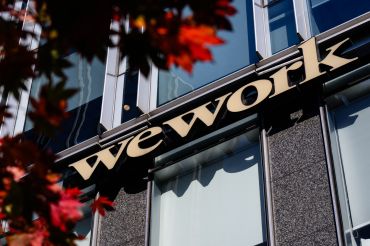 With an anticipated $350 billion in real estate loans set to mature each year for the next three years, the so-called Wall of Maturities has finally arrived.
With an anticipated $350 billion in real estate loans set to mature each year for the next three years, the so-called Wall of Maturities has finally arrived.
Panelists at CREFC’s High Yield and Distressed Realty Assets Summit, held this week in New York, were mostly celebratory about the impending flood of maturities, which they say will create opportunities for the right (i.e. smart) lenders.
Estimates range wildly on how many of the maturing loans are for assets that currently don’t have the valuation or rent rolls to support a traditional refinance. Executives on the panel, who cannot be identified per the CREFC media policy, offered guesses that 20 percent to 50 percent of maturing loans would face difficulties.
But whether that means a slew of potentially undervalued loans and properties hitting the market—and, therefore, upside for moneyed investors—or augurs a major meltdown in the credit markets is a matter of perspective.
Some are hesitant, of course.
“A lot of these loans are [interest-only],” the moderator mentioned.
“And [the borrowers] don’t just need money to de-lever, they need money to run the asset as well,” pointed out another panelist.
But for those who do manage to refinance some of the riskier assets, there are likely to be opportunities.
“I think the Fed will raise rates too soon, which will be great,” offered one experienced manager of institutional real estate debt. “That will cause volatility, which is great for those that trade in it,” he said, further speculating that a coming uproar will turn players into “capital haves and have nots.”
Rising rates are like “cracking an egg,” said another panelist. Once they start going up, they will continue to rise, because otherwise the Fed could look foolish.
“It has to be a progression. Otherwise, Janet Yellen [will lose] 100 percent of her credibility,” he speculated.
As the number of maturities builds, panelists agreed that CMBS lenders were likely to be the most aggressive when it comes to refinancing these assets. They also pointed to opportunities for aggressive mezzanine players. One panelist said small-balance CMBS loans have been mostly overlooked in discussions of the “Wall” thus far, noting that around 50 percent of the loans coming due are small balance and will likely look for CMBS refinancing. Another panelist speculated that Auction.com would play heavily in that space.
But there are other, perhaps less obvious effects on the market that the “Wall” is already creating, the panelists said. First off, the multitude of new debt capital funds in the market has strained the ability of many funds to raise money.
“Even seasoned funds are having trouble,” despite all the talk of the staggering amount of capital in the market, one panelist said.
Newbie funds are also fudging their numbers, making it seem that they’ve raised five times as much capital as they have on the books, when they are only assuming that that leverage will be available, he said.
As a result, look for a “barbelling,” where smaller funds and massive ones can compete, but the middle of the market is slim, the experienced manager said.
Second, sellers of distressed debt and real estate are assembling portfolios with some performing, attractive assets and burying the more distressed bits in the package deal—an all or nothing offer, one panelist said–a trend that shows no signs of slowing.
“This type of product will continue trading hands,” he said.
More than one exec said they worry about more poor-quality loans in securitization.
“Suburban office is hard [to refinance],” the non-bank CMBS lender said, “and retail is very difficult.”
Of course, majority of loans coming due are office and retail—about $120-$140 billion of the former and $100 billion of the latter are up for refi in the next three years, per CREFC estimates.



